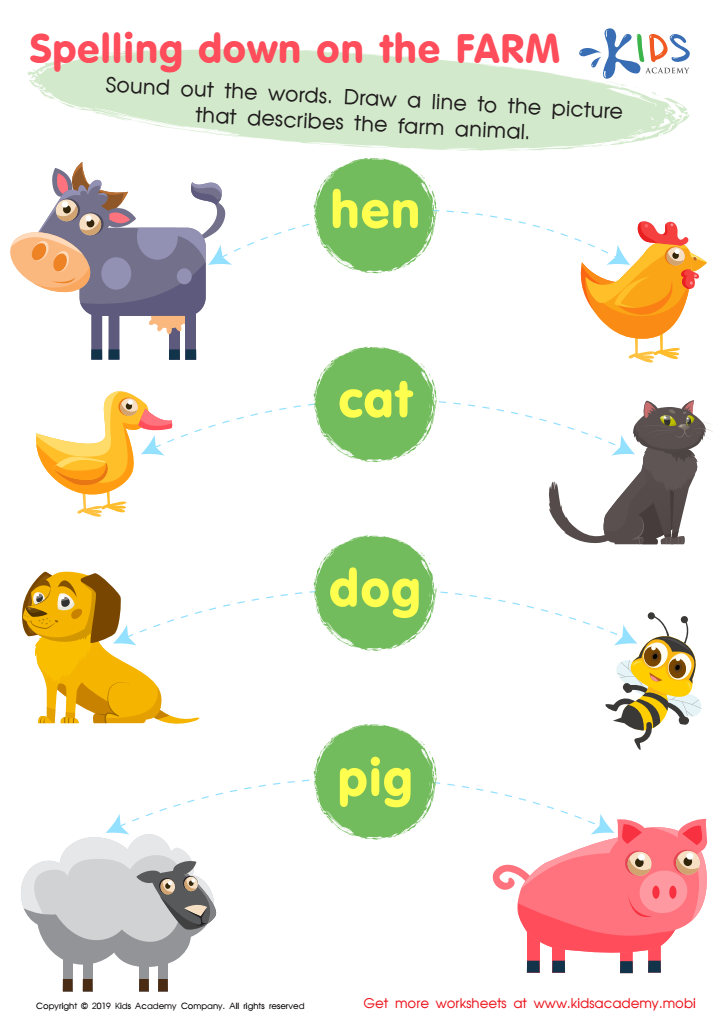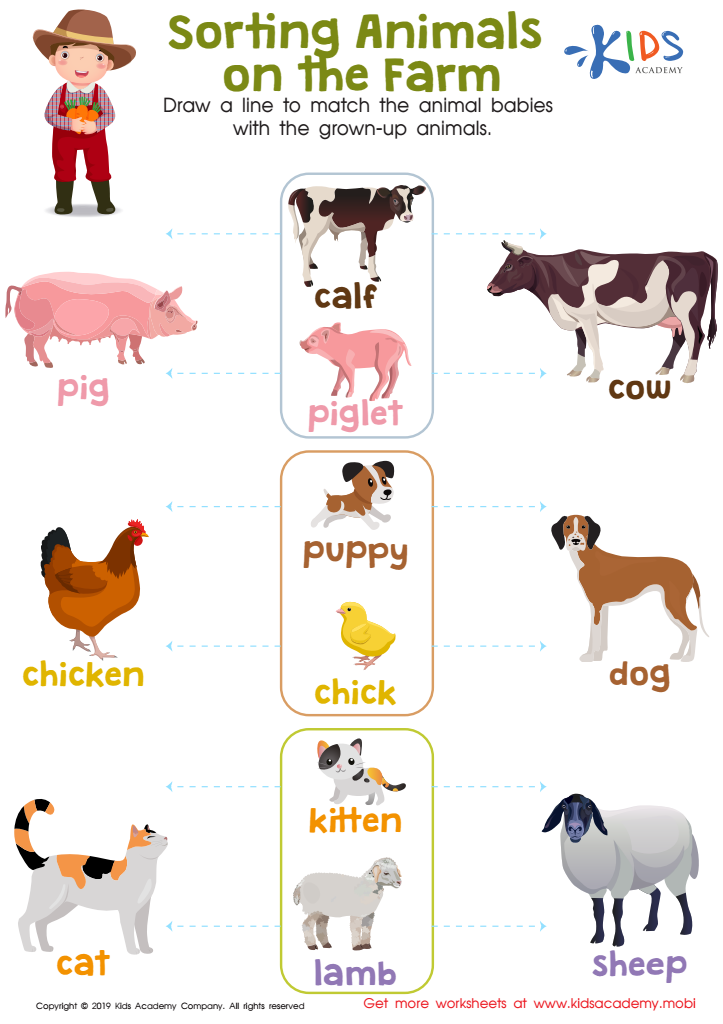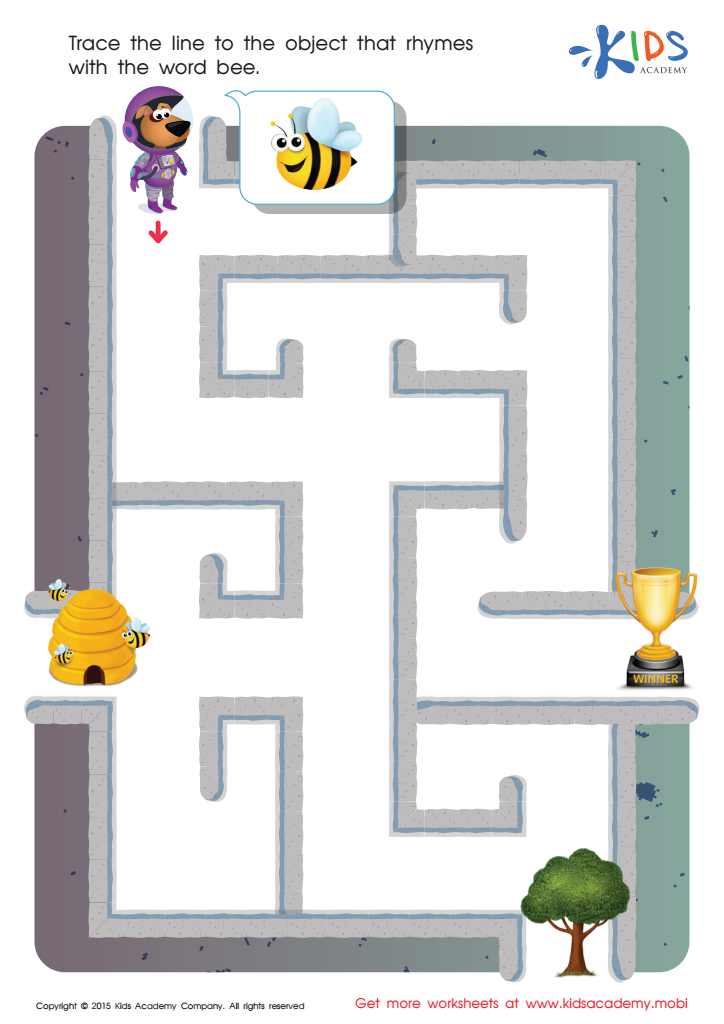Animal recognition Normal Reading Worksheets for Ages 5-9
3 filtered results
-
From - To
Discover our engaging "Animal Recognition Normal Reading Worksheets" designed for children ages 5-9! These worksheets are perfect for young learners to explore the fascinating world of animals while developing essential reading skills. Each worksheet offers vibrant illustrations and simple texts to captivate kids’ attention, promoting their vocabulary and comprehension abilities. Easy-to-follow activities, such as matching animals with their names and identifying characteristics, boost confidence and enthusiasm for reading. Ideal for both classroom and home use, these worksheets support educational growth and provide hours of fun. Help your child unleash their curiosity and love for reading with our animal-themed worksheets today!


Spelling Down on the Farm Worksheet


Sorting Animals on the Farm Worksheet


Bee Rhyming Words Worksheet
Animal recognition is vital for children aged 5-9 as it engages their curiosity and enhances their learning development. At this age, kids are naturally inquisitive, and introducing them to different animals helps nurture this curiosity. Understanding animals fosters respect for living creatures and the environment, leading to a deeper appreciation for biodiversity.
From a cognitive perspective, recognizing animals contributes to vocabulary building and language skills. Children learn names, characteristics, habits, and habitats, enriching their linguistic development and comprehension. This cognitive engagement supports critical thinking as they explore animal behaviors and relationships in ecosystems.
Moreover, animal recognition can enhance emotional intelligence. When children learn about various species, they begin to empathize with all living beings. This foundation cultivates compassion and care, teaching them the importance of kindness.
Lastly, incorporating animals into early education can make learning enjoyable and interactive. Interactive books, games, and activities focused on animal recognition can entertain and educate simultaneously, making it easier for children to absorb information.
In essence, the recognition of animals is not merely about identifying species; it fosters a holistic development environment for young learners, influencing their cognitive, emotional, and social growth. Parents and teachers play a crucial role in facilitating this essential aspect of early learning.

 Assign to My Students
Assign to My Students



















